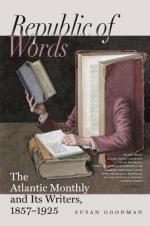Riding great Flanders horses, a flagon swung on one side of the large padded saddle, and a haversack on the other,—booted to the thigh, and girded with the leathern bandoleer, supporting cartridge-box and basket-hilted sword, they are a picturesque and a motley troop. Some wear the embroidered buffcoat over the coat of mail, others beneath it,—neither having yet learned that the buffcoat alone is sabre-proof and bullet-proof also. Scantily furnished with basinet or breastplate, pot, haqueton, cuirass, pouldron, taslets, vambraces, or cuisses,—each with the best piece of iron he could secure when the ancestral armory was ransacked,—they yet care little for the deficit, remembering, that, when they first rode down the enemy at Worcester, there was not a piece of armor on their side, while the Puritans were armed to a man. There are a thousand horsemen under Percy and O’Neal, armed with swords, pole-axes, and petronels; this includes Rupert’s own lifeguard of chosen men. Lord Wentworth, with Innis and Washington, leads three hundred and fifty dragoons,—dragoons of the old model, intended to fight either on foot or on horseback, whence the name they bear, and the emblematic dragon which adorns their carbines. The advanced guard, or “forlorn hope,” of a hundred horse and fifty dragoons, is commanded by Will Legge, Rupert’s life-long friend and correspondent; and Herbert Lunsford leads the infantry, “the inhuman cannibal foot,” as the Puritan journals call them. There are five hundred of these, in lightest marching order, and carrying either pike or arquebuse,—this last being a matchlock musket with an iron rest to support it, and a lance combined, to resist cavalry,—the whole being called “Swine (Swedish) feathers,”—a weapon so clumsy, that the Cavaliers say a Puritan needs two years’ practice to discharge one without winking. And over all these float flags of every hue and purport, from the blue and gold with its loyal “Ut rex, sit rex” to the ominous crimson, flaming with a lurid furnace and the terrible motto, “Quasi ignis conflatoris.”
And foremost rides Prince Rupert, darling of fortune and of war, with his beautiful and thoughtful face of twenty-three, stern and bronzed already, yet beardless and dimpled, his dark and passionate eyes, his long love-locks drooping over costly embroidery, his graceful scarlet cloak, his white-plumed hat, and his tall and stately form, which, almost alone in the army, has not yet known a wound. His high-born beauty is preserved to us forever on the canvas of Vandyck, and as the Italians have named the artist “Il Pittore Cavalieresco,” so will this subject of his skill remain forever the ideal of Il Cavaliere Pittoresco. And as he now rides at the head of this brilliant array, his beautiful white dog bounds onward joyously beside him, that quadruped renowned in the pamphlets of the time, whose snowy skin has been stained by many a blood-drop in the desperate forays of his master, but who has thus far escaped so safely that the Puritans believe him a familiar spirit, and try to destroy him “by poyson and extempore prayer, which yet hurt him no more than the plague plaster did Mr. Pym.” Failing in this, they pronounce the pretty creature to be “a divell, not a very downright divell, but some Lapland ladye, once by nature a handsome white ladye, now by art a handsome white dogge.”




